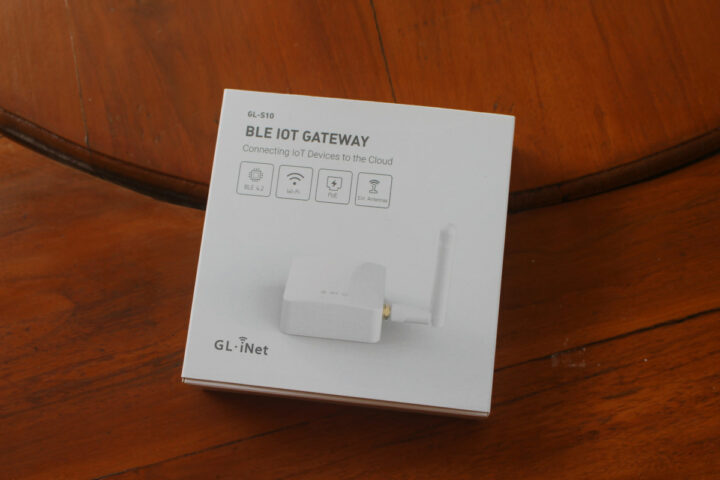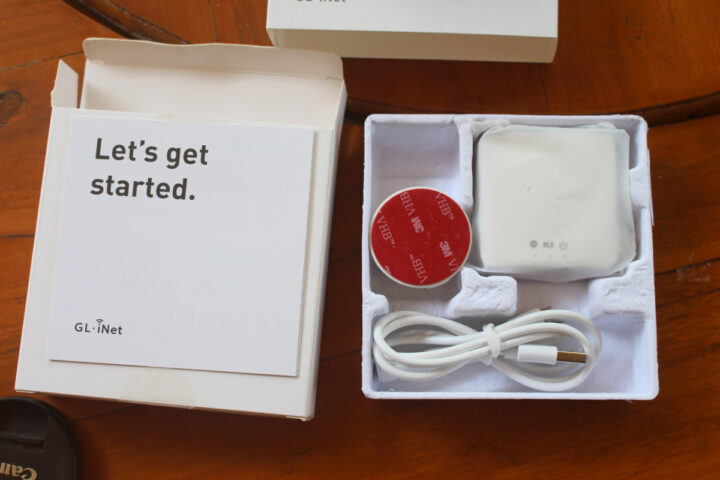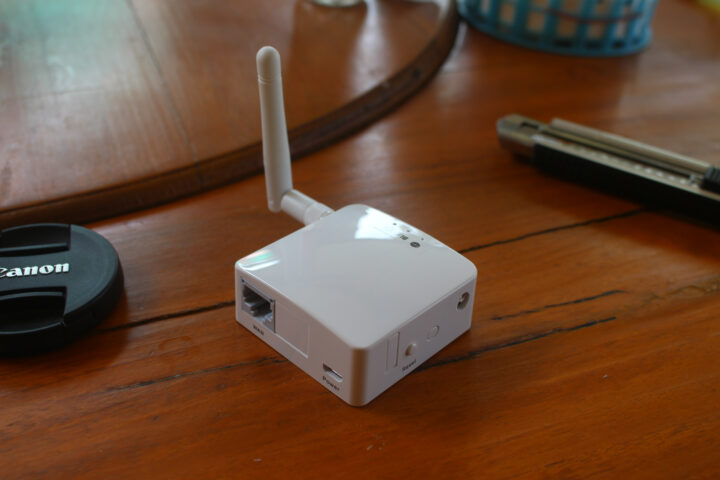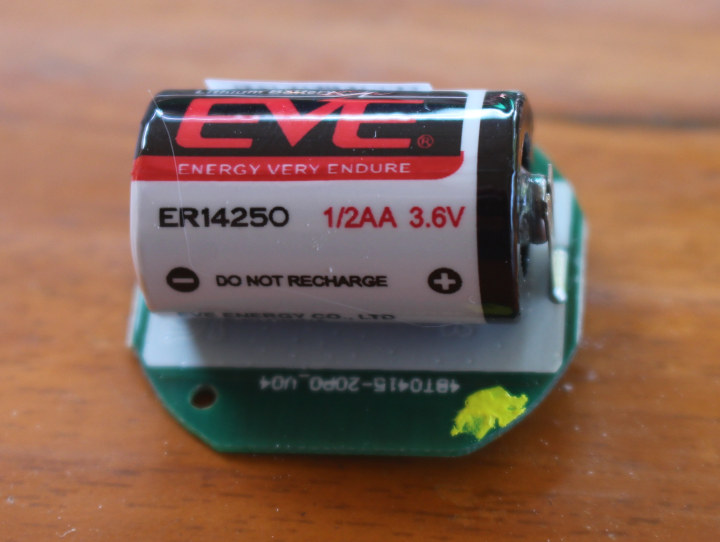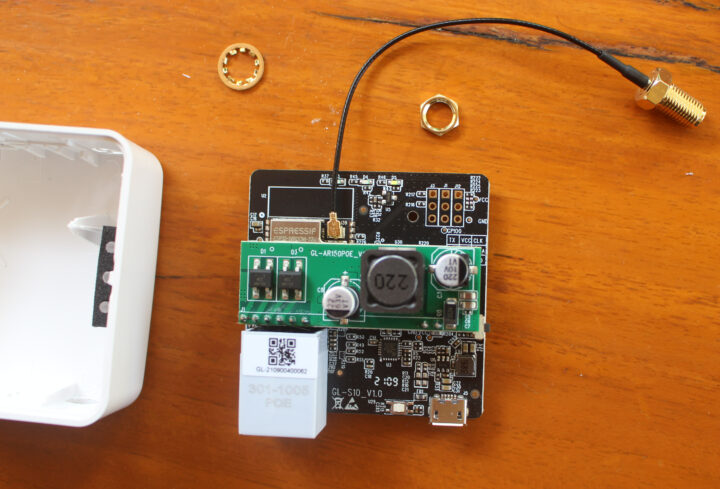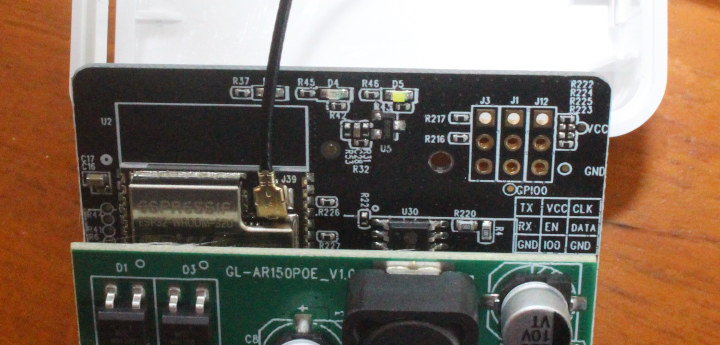GL.inet introduced the GL-S10 BLE to MQTT IoT gateway last month with an ESP32 module offering WiFi and Bluetooth connectivity, as well as Ethernet and PoE support. I got offered a sample for review, and just received it together with the optional BLE beacon. So today, I’ll first have a look at the content, and check out the hardware with a teardown.
GL.inet GL-S10 unboxing
The package shows us the main features with Bluetooth LE 4.2, WiFi, PoE, and external antenna, with GL-S10 described as a BLE IOT GATEWAY connecting IoT devices to the Cloud.
The gateway ships with a getting started guide, an antenna, a USB cable for power, as well as the beacon which we can see with a 3M stick tape.
On one side, we have the RJ45 connector for Ethernet and a micro USB port for power, while the other side features a reset button, plus three LEDs at the top of the enclosure for power, Internet, and BLE. The enclosure may have been used/designed for other products as well since we can clearly see areas for extra Ethernet and USB ports.
The beacon comes with a mounting pad with the read 3M tape we noticed while opening the package.
GL-S10 gateway and BLE beacon teardown
And now for the fun part. Users do not need to open the BLE beacon at all since a battery is already installed, but that’s what we do here!
The beacon is based on Dialog SmartBond DA14580 Cortex-M0 microcontroller with Bluetooth 4.2 LE connectivity and can be turned on and off with a switch.
It is powered by a non-rechargeable 3.6V ER14250 1/2AA battery from a company called Energy Very Endure (EVE). Please deduct 10 points from your respective government’s social credit score if you laughed at that. 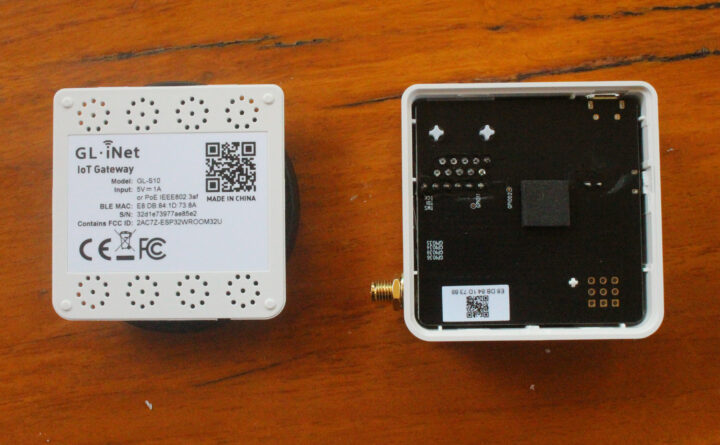
Time for the GL-S10 gateway teardown. There’s nothing interesting on the back, apart from the FCC-ID: 2AC7Z-ESP32WROOM32U. 2AC7Z is the code for Espressif Systems, and that means only the ESP32-WROOM-32U is certified. I always thought the whole product had to be re-certified, even when equipped with a certified module, but it does not appear to be the case here.
The PoE module (GL-AR150POE) is installed at the top and soldered to the main board, itself powered by an ESP32-WROOM-32U module providing WiFI and BLE connectivity. That’s also means we found the other product the enclosure was used with: “GL-AR150 smart mini router“. The other identifiable chip on the board is the SMSC 8720a 10/100M Ethernet transceiver.
There are also 9 through holes giving access to UART, IO0, EN, GND, and VCC, as well as CLK and DATA pin that could be for I2C (TBC). There are also ESP32 PoE boards available like Olimex ESP32-POE or SiliconIgnition wESP32, but if you want a solution with enclosure, GL-S10 appears to be reprogrammable, exposes a few IOs, and costs $24.90 without BLE beacon which is not a bad price.
The model I received for the review includes the BLE beacon and sells for $29.90 on GL.Inet store.
Continue reading “Review of GL.inet GL-S10 BLE to MQTT gateway with MQTT X open-source client“.

Jean-Luc started CNX Software in 2010 as a part-time endeavor, before quitting his job as a software engineering manager, and starting to write daily news, and reviews full time later in 2011.
Support CNX Software! Donate via cryptocurrencies, become a Patron on Patreon, or purchase goods on Amazon or Aliexpress


